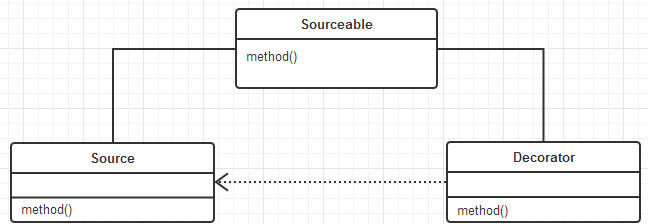顾名思义,装饰模式就是给一个对象增加一些新的功能,而且是动态的,要求装饰对象和被装饰对象实现同一个接口,装饰对象持有被装饰对象的实例,关系图如下:

Source类是被装饰类,Decorator类是一个装饰类,可以为Source类动态的添加一些功能,代码如下:
- public interface Sourceable {
- public void method();
- }
- public class Source implements Sourceable {
- @Override
- public void method() {
- System.out.println("the original method!");
- }
- }
- public class Decorator implements Sourceable {
- private Sourceable source;
- public Decorator(Sourceable source){
- super();
- this.source = source;
- }
- @Override
- public void method() {
- System.out.println("before decorator!");
- source.method();
- System.out.println("after decorator!");
- }
- }
测试类:
- public class DecoratorTest {
- public static void main(String[] args) {
- Sourceable source = new Source();
- Sourceable obj = new Decorator(source);
- obj.method();
- }
- }
输出:
before decorator!
the original method!
after decorator!
装饰器模式的应用场景:
1、需要扩展一个类的功能。
2、动态的为一个对象增加功能,而且还能动态撤销。(继承不能做到这一点,继承的功能是静态的,不能动态增删。)
缺点:产生过多相似的对象,不易排错!